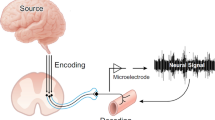Abstract
The postural tachycardia syndrome (POTS) is characterized clinically by orthostatic lightheadedness and tachycardia. When these patients perform a Valsalva maneuver, there is an excessive blood pressure increment after cessation of the maneuver (phase IV) that is sometimes associated with headaches. It is not known whether excessive phase IV is due to excessive peripheral vascular tone (an α-adrenergic mechanism) or is a manifestation of increased β-adrenergic tone (hyperadrenergic state). The authors undertook a pharmacologic study evaluating the effect of intravenous phentolamine (α-adrenergic antagonist) and propranolol (β-adrenergic antagonist) on the different phases of the Valsalva maneuver in a group of patients with POTS and age-matched normal control subjects. Patients with POTS had mean phases, when compared with controls, that were characterized by more negative II-E (p=0.07), smaller II-L (p=0.04), and significantly larger phase IV (p=0.001). The effect of phentolamine was qualitatively and quantitatively different in POTS when compared with controls. Ten mg phentolamine in controls resulted in a significant accentuation of phase II-E (p=0.001), attenuation of phase II-L (p=0.002), and increase of phase IV (57.6 vs 30.7 mm Hg; p=0.025). These changes resembled those of patients with POTS at baseline. In patients with POTS, the phase II abnormalities, already present, were further accentuated (p<0.001), and phase IV became smaller (50.6 vs 73.8 mm Hg; p=0.09). Propranolol had no significant effect on phases II-E and II-L, but significantly reduced phase IV in both controls (p<0.05) and in patients with POTS (p<0.001) and improved the headache symptoms, when present, during and after phase IV. The authors conclude that phase IV is mainly under β-adrenergic regulation and that the exaggerated phase IV in POTS is a result of a hyperadrenergic state.
Similar content being viewed by others
References
Low PA, Schondorf R, Novak V, Sandroni P, Opfer-Gehrking TL, Novak P. Postural tachycardia syndrome. In:Clinical Autonomic Disorders: Evaluation and Management. 2nd Ed. Low PA, ed. Philadelphia: Lippincott-Raven; 1997:681–697.
Sandroni P, Benarroch EE, Low PA. Pharmacological dissection of components of the Valsalva maneuver in adrenergic failure.J Appl Physiol 1991; 71:1563–1567.
Korner PI, Tonkin AM, Uther JB. Reflex and mechanical circulatory effects of graded Valsalva maneuvers in normal man.J Appl Physiol 1976; 40:434–440.
Scharpey-Schafer EP. Effects of Valsalva's maneuver on the normal and failing circulation.Br Med J 1955; 3:693–695.
Delius W, Hagbarth KE, Hongell A, Wallin BG. Manoeuvres affecting sympathetic outflow in human muscle nerves.Acta Physiol Scand 1972; 84:82–94.
Schondorf R, Low PA. Idiopathic postural orthostatic tachycardia syndrome: an attenuated form of acute pandysautonomia?Neurology 1993; 43:132–137.
Low PA, Opfer-Gehrking TL, Textor SC, Benarroch EE, Shen W-K, Schondorf R, etal. Postural tachycardia syndrome (POTS).Neurology 1995; 45 (suppl 5):S19-S25.
Sandroni P, Benarroch EE, Opfer-Gehrking TL, Low PA. Early cardiovascular predictors of syncope [abstract].Neurology 1995; 45: A396.
Novak V, Novak P, Opfer-Gehrking TL, Low PA. Postural tachycardia syndrome: time frequency mappingJ Auton Nerv Syst 1996; 61:313–320.
Bunnell IL, Greene DG, Kunz WW. Influence of tetraethylammonium chloride on the circulatory responses to the Valsalva manoeuvre.J Appl Physiol 1951; 4:345–350.
Elisberg El, Miller G, Weinberg SL, Katz LN. The effect of the Valsalva maneuver on the circulation. II. The role of the autonomic nervous system in the production of the overshoot.Am Heart J 1953; 45:227–236.
Sandroni P, Opfer-Gehrking TL, Benarroch EE, Shen W-K, Low PA. Certain cardiovascular indices predict syncope in the postural tachycardia syndrome.Clin Auton Res 1996; 6:225–231.
Low PA, Opfer-Gehrking TL, Textor SC, Schondorf R, Suarez GA, Fealey RD, et al. Comparison of the postural tachycardia syndrome (POTS) with orthostatic hypotension due to autonomic failure.J Auton Nerv Syst 1994; 50:181–188.
Author information
Authors and Affiliations
Rights and permissions
About this article
Cite this article
Sandroni, P., Novak, V., Opfer-Gehrking, T.L. et al. Mechanisms of blood pressure alterations in response to the Valsalva maneuver in postural tachycardia syndrome. Clinical Autonomic Research 10, 1–5 (2000). https://doi.org/10.1007/BF02291382
Received:
Accepted:
Issue Date:
DOI: https://doi.org/10.1007/BF02291382




